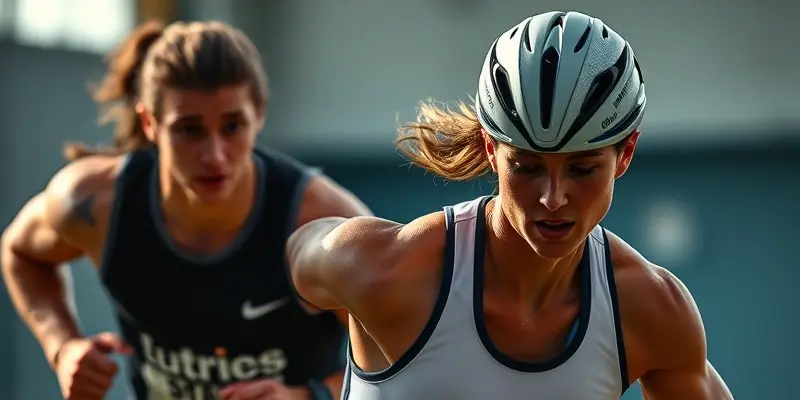Proprioception: The Secret Weapon for Injury Prevention & Faster Recovery
Staying active is essential, but injuries can sideline even the most dedicated athletes and fitness fans. Have you ever rolled an ankle or struggled with balance after coming back from a break? You’re not alone—and there’s a science-backed solution: proprioception training.
As a fitness and wellness expert at GymPulse with over a decade of hands-on experience, I’m here to guide you through why proprioception matters and exactly how to build it into your routine—for better performance and bulletproof injury prevention.
What Is Proprioception, and Why Does It Matter?
Have you ever closed your eyes and touched your nose? That’s proprioception at work! Think of it as your body’s “GPS”—an internal sense that tells you where your limbs are in space without needing to look.
The Science Made Simple
- Your muscles, joints, and nerves constantly send signals to your brain about movement and positioning.
- Proprioception allows you to walk, sprint, jump, or change direction—without losing balance.
- Athletes with strong proprioceptive skills have faster reaction times and handle unexpected wobbles or bumps more easily.
Benefits: Injury Prevention & Safer, Smarter Recovery
Stop Injuries Before They Start
Many common injuries—ankle sprains, ACL tears, and muscle strains—happen when the body can’t react fast enough to twists, slips, or impact. Proprioceptive training can dramatically reduce this risk by:
- Enhancing stability during movement
- Improving coordination and balance
- Strengthening the muscles around vulnerable joints (especially ankles and knees)
Accelerate Healing and Safe Return to Sport
Regular proprioceptive exercises after injury:
- Help retrain nerves and muscles to work together efficiently
- Speed up the return to regular activity or sport
- Lower the risk of re-injury
Discover more steps for a safe return in our injury recovery checklist.
Beginner-Friendly Proprioception Exercises (with Step-by-Step Instructions)
Ready to boost your balance and bulletproof your body? Here are research-backed drills for all levels:
1. Single-Leg Stand
- Stand tall and lift one foot off the floor.
- Keep your core tight and arms at your sides.
- Hold for 30 seconds, then switch legs.
- Increase challenge: try with eyes closed or stand on a cushion.
2. Heel-to-Toe Walk
- Walk straight, placing each heel directly in front of your toes.
- Use a hallway or yoga mat for guidance.
- Focus on steady, controlled steps.
3. Bird Dog
- Start on all fours.
- Extend your right arm and left leg at the same time—keep your back flat.
- Hold for five seconds, then switch sides.
- Try 10 reps each side.
4. Cone Pickup (or Reach & Touch)
- Stand on one leg, bend forward at the hips, and reach to touch a small object (like a cone) on the floor.
- Extend the non-supporting leg behind you for balance.
- Return to upright and repeat 6-8 times per leg.
5. Reverse Lunge
- Step backward into a lunge, keeping your front knee stable.
- Focus on balance—don’t rush.
- Switch sides for 10 reps each leg.
Supportive Nutrition & Smart Recovery Tools
Exercise is only half the battle. Fuel and recovery matter!
Nutrition for Faster Healing
- Protein: Repairs muscle tissue (eggs, dairy, beans)
- Vitamin C & Collagen: Power up connective tissue repair (citrus, berries, chicken broth). Learn more about the benefits of vitamin C immunity athletes.
- Omega-3s: Reduce inflammation (salmon, flaxseed)
- Hydration & Minerals: Keep muscles and nerves working their best
Must-Have Recovery Tools
- Balance pads/Bosu balls: Add instability for more challenging proprioceptive work
- Foam rollers & massage guns: Release tight muscles, aid recovery, and prevent soreness
Motivation: Staying Committed During Rehab
Rehabilitation or injury recovery isn’t always easy—your mindset matters as much as your muscles! Here’s how to keep your spirits high:
- Set Small Goals: Celebrate progress, even if it’s holding a balance pose a few seconds longer.
- Visualize Success: Picture yourself strong and active again. If you want to enhance this, explore our guide on visualization for healing.
- Track Your Progress: Use a journal or app to see how far you’ve come.
- Practice Mindfulness: Short breathing or relaxation exercises help reduce frustration.
Takeaway: Start Today for a Stronger, Safer Tomorrow
Proprioception exercises are a game changer for anyone who wants to stay active—whether you’re coming off an injury or want to avoid one entirely. By weaving these beginner-friendly drills into your workouts and supporting your body with the right fuel and tools, you’ll be ready to recover smarter, play safer, and perform at your best.
Have questions or want a custom recovery plan? Drop a comment or visit the GymPulse Club community—we’re here to help you every step of the way!

